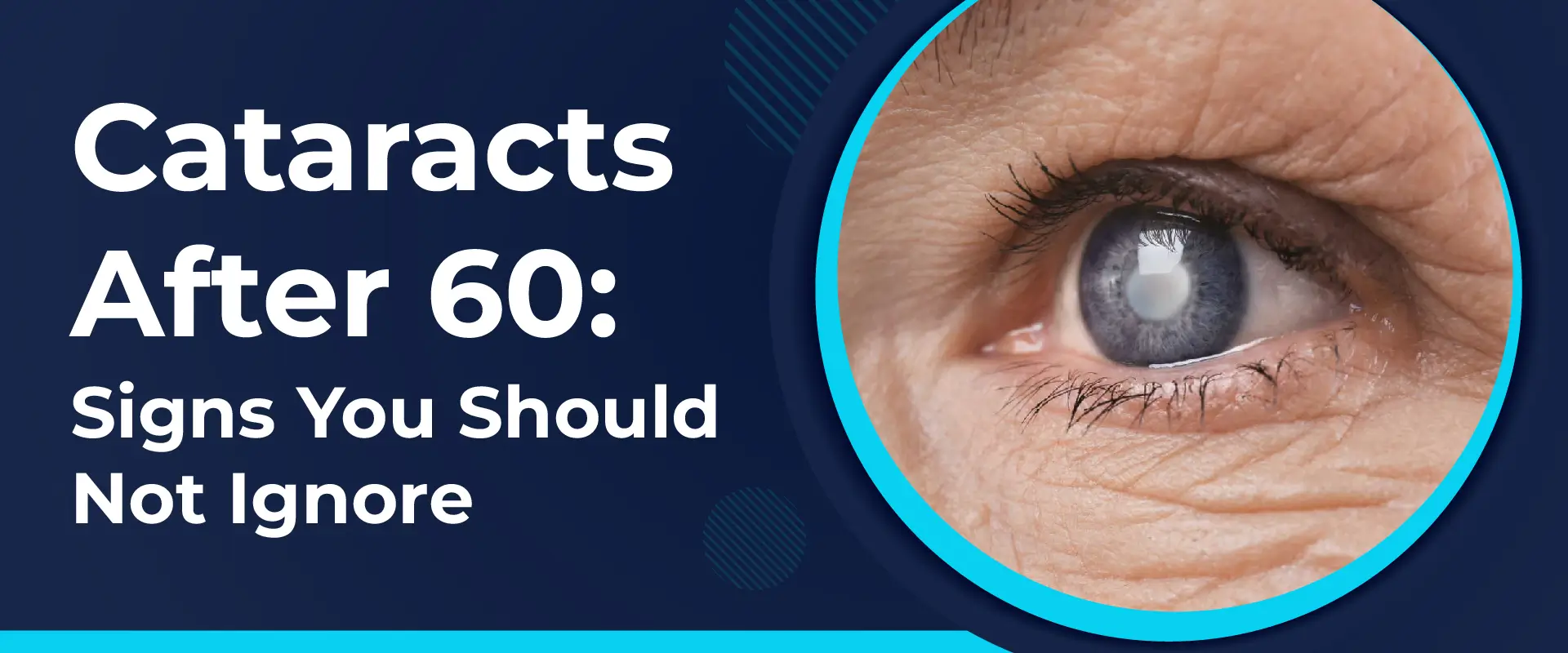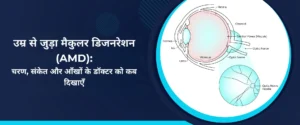Change is the law of nature. As we age, our bodies witness many changes – and so do our eyes. One of the most common eye conditions induced by advancing age is cataracts, more so after the age of 60. Cataracts occur when the natural lens of the eye becomes cloudy, leading to blurry or dim vision. While cataracts often develop slowly, there are certain signs that should never be ignored. Let us have a look:
Vision Changes
One of the earliest symptoms is blurred or cloudy vision. You may feel as if you were looking through a fogged-up window. You might find it difficult to read, watch TV, or recognize faces. This blurriness does not get better with glasses or eye drops. In fact, it gradually worsens over time.
Light Sensitivity
Increased sensitivity to light is another common sign. Bright sunlight, indoor lighting, or headlights from vehicles at night can suddenly feel harsh or glaring. If lights seem too bright to bear or you notice halos around them, it is a pointer to get your eyes checked.
Changes in Specs Number
Frequent changes in prescription eye glasses can also be a red flag. If you witness your eyesight changing too often – you start getting new spectacles more often than usual, it could indicate that your cataracts are progressing. It is important to note that a new prescription might temporarily improve your vision, but it will not stop the cataracts from getting worse.
Poor Night Vision
Many people also experience difficulty seeing clearly at night. Driving in low light conditions may become challenging because of reduced contrast sensitivity and increased glare. Night vision problems can be dangerous, so they should not be taken lightly.
Faded Colours
Another important symptom is colours appearing faded or yellowed. Cataracts can make everything look dull, as if you were looking at the world through a brown or yellow filter. If whites no longer appear bright or colours seem faded, cataracts might be the cause.
Double Vision
Double vision in one eye is a lesser-known but significant sign of cataracts. Double vision means you see two images of the same object. It happens when cataracts affect the focusing ability of one eye.
Get Your Eyes Checked
If you are in your sixties and notice any of these symptoms, do not delay an eye check-up. Cataracts are very much treatable with surgical interventions – that replace the cloudy lens with a clear artificial one.
Cataract surgery is one of the safest and most effective surgeries today. There are advanced options in cataract surgery that involve no blade, no suture, and no pain. What’s more, you get improved vision in just 24 hours. It is particularly true of robotic AI cataract surgery. Apart from that, premium choices in artificial lenses may permanently eliminate the need for glasses.
The Bottom Line
Almost everybody who lives long enough is quite likely to develop cataracts. They are common after crossing the age of 60. Recognizing the signs early can prevent serious vision problems.
Regular eye exams and timely treatment can restore clear, sharp vision and significantly improve your quality of life. For a trusted opinion regarding your cataracts, consult Dr. Amanpreet Kaur, Senior Cataract and Refractive Surgeon at Sohana Hospital. With extensive experience in dealing with complex cataract cases, she is a much sought-after cataract specialist in Chandigarh.





